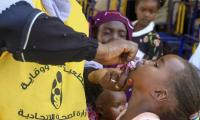ISLAMABAD: The Council of Common Interests (CCI) has approved least cost basis (open competitive bidding) Indicative Generation Capacity Expansion Plan (IGCEP) model, energy minister said on Monday.
“IGCEP model only allows power generation to be added when it is needed (demand-supply projections) and on least cost basis (open competitive bidding),” Hammad Azhar, minister for Energy said in a series of tweets.
The Indicative Generation Capacity Expansion Plan -- IGCEP 2021-30, an indicative annual plan prepared by the National Transmission and Dispatch Company (NTDC) as per National Electricity Policy (NEP) was approved last month by the Cabinet Committee on Energy (CCOE). Minister Azhar said the model was pending since 2005. “IGCEP model that only allows power generation to be added when its needed (demand-supply projections) and issues like excess capacity and expensive, non-transparent power contracts will be avoided in the future as a result,” he said.
Over the years, the country has added extra generation to counter shortages- but not much attention has been given to energy infrastructure, efficiency, and improving the recovery of electricity dues - one of the key reasons for Pakistan’s huge circular debt pile-up.
At the same time, the new added generation has been primarily fossil fuel-based. The government appears to be slowing down ongoing power projects, still it will have to increase generation capacity by 35-40 percent from about 34,501MW to 57,204MW by 2030.
Azhar said IGCEP model had been put in place in the past, the circular debt and many other problems could be avoided. "Issues like excess capacity and expensive and non-transparent power contracts would be avoided in the future as a result." Power sector circular debt touched Rs2.327 trillion as of June 30, 2021.
By some estimates, the country has had to pay capacity charges of Rs850 billion a year in the last few years, a figure projected to rise beyond Rs1.45 trillion by 2023. The IGCEP envisions the commissioning of a portfolio of new generation projects including many hydropower projects, Thar coal-based projects, K-3 nuclear power plant, and over 4,000MW of solar and wind-based renewable energy projects.
Under the approved IGCEP the generation mix of 2022 which is dominated by fossil fuel will shift to clean energy (hydel, Solar, Wind, Nuclear) by the year 2030.
Moreover, for the same period, the indigenous fuel-based generation against the imported fuel-based generation is going to improve from 69 percent to 87 percent of the total fuel-based generation.
Around 88 percent of the total capacity increased from 2022 to 2030 which will come from indigenous fuel and the balanced is only for those projects which were committed prior to this government came into power. Fossil fuel has more than 50 percent share of generation capacity right now, however, in the 2022-2030 period the share of fossil will be only 25 percent. So, therefore, all the new project commitments are based on indigenous fuel.
Honda officials posing for a photgraph. —APP/FileKARACHI: Honda Atlas Cars Pakistan Ltd has achieved a major...
SOS children village's children showing bags donated by Emirates International Airlines. — Emirates...
Automobiles at the shipping terminal are shown from the view of a drone in San Diego, California, US, March 26, 2025....
Key challenge lies in whether the ruling elite is willing to implement changes that could weaken their grip on power
A woman holds a smartphone displaying the logo of social network X . — AFP/FileElon Musk said his xAI artificial...
A representational image of a person using his cellphone for a digital transaction. — Unsplash/FileKARACHI: Chief...







